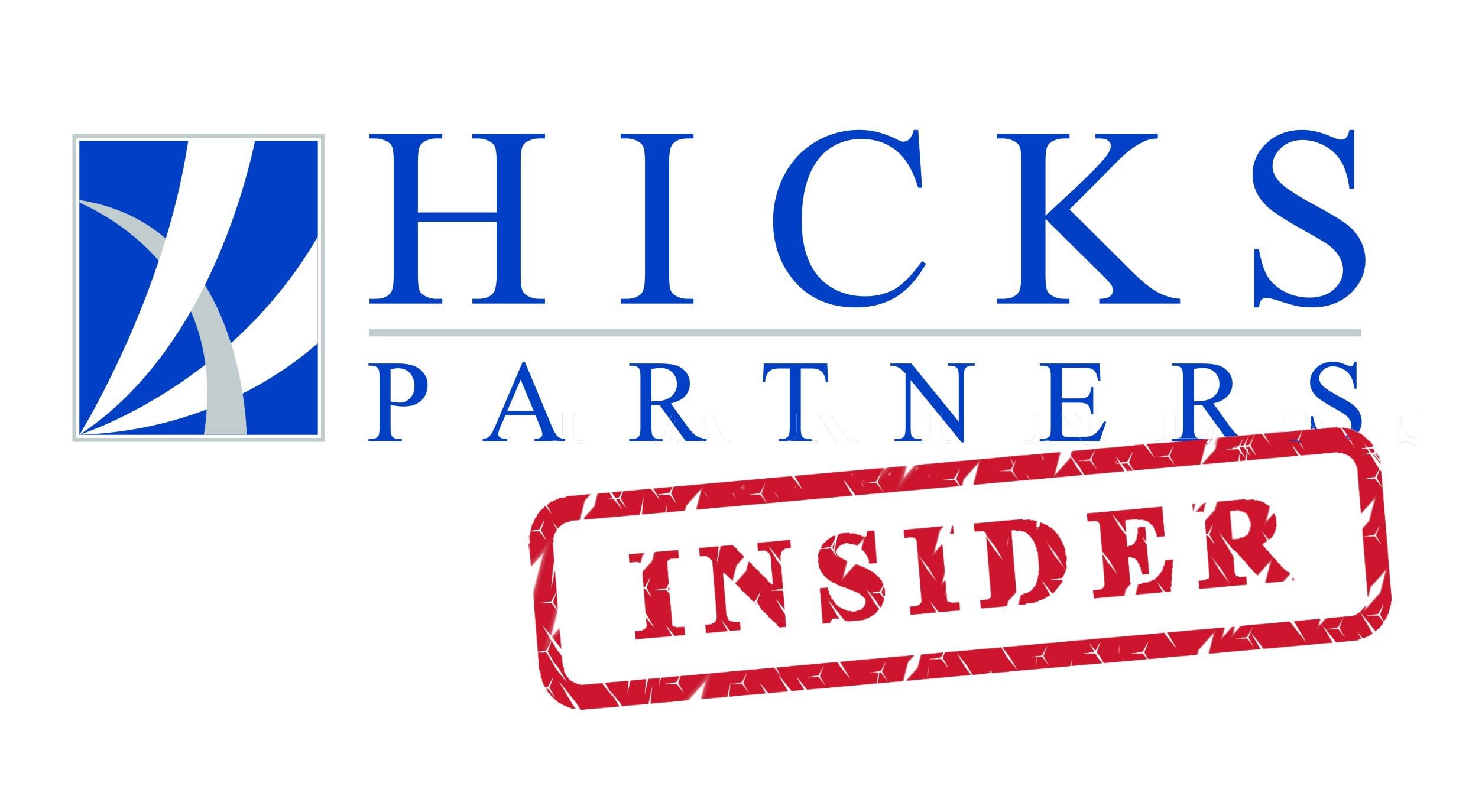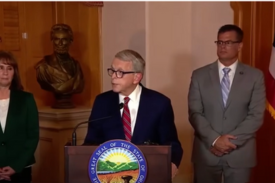Governor Unveils Broad Budget Priorities for Next Biennium |
|
|---|
|
Yesterday Governor DeWine unveiled the executive spending plan, also known as the “BlueBook” for FY 2026 and FY 2027. This document proposes the Governor’s spending priorities across all of Ohio’s state agencies including healthcare, education, and infrastructure. The total all-funds budget is projected at $108.6 billion in FY 2026 and $110.7 billion in FY 2027. Key budget elements include: - Total all funds spending reaches $110.7 billion by FY27, reflecting 1.9% increase from FY26
- Total Spending reaches $108.6 billion in FY26, reflecting 2.9% increase from FY25
- Sales/use taxes generate 32% of all revenue, with income tax at 23%
General government operations account for 15.2% of spending, while primary/secondary education comprises 13.7% of the total budget. Tax revenues are expected to grow from $28.4 billion in FY2025 to $30.6 billion by FY2027. |
|
|---|
|
 Key budget hearings this week will feature OBM, Education & Workforce, JFS, DRC, and others as lawmakers assess Ohio’s FY 2026-2027 spending plan. With Medicaid, education, and tax policy in focus, legislators must balance funding priorities and fiscal sustainability. Key budget hearings this week will feature OBM, Education & Workforce, JFS, DRC, and others as lawmakers assess Ohio’s FY 2026-2027 spending plan. With Medicaid, education, and tax policy in focus, legislators must balance funding priorities and fiscal sustainability. |
|
|---|
|
| Ohio’s 2026 Statewide Races: GOP Battle Begins |
|
|---|
|
 |
Ohio’s 2026 elections are taking shape, with Republicans gearing up for a fierce primary to replace term-limited Gov. Mike DeWine. GOP Governor Race - Vivek Ramaswamy: Businessman & former presidential candidate is appealing to the populist conservatives and the Trump base. Ramaswamy is assembling a team of advisors connected to President Trump and Vice President Vance, and recent polls show him with a commanding lead among GOP voters. He is expected to formally announce his bid later this month.
- Dave Yost: Attorney General Yost emphasizes experience, electoral success and deep knowledge of Ohio. Yost made his entrance official in January.
- Robert Sprague: State Treasurer Sprague has filed paperwork to run for governor but has not formally declared. He will focus on his strong fiscal expertise and impressive social conservative credentials.
- Frank LaRose: After two unsuccessful US Senate GOP primary runs, Secretary of State LaRose is weighing his options. Like Yost and Sprague, he’s term limited, so will have to run for, or get appointed to, another office to continue his public service career.
- Jim Renacci: Former congressman Renacci who challenged DeWine in the 2022 GOP primary, is reportedly considering another bid. Renacci has said positive things about Ramaswamy, so he may be angling to team up with the presumptive leader.
Key Dynamic: Establishment figures (Yost, Sprague, LaRose) face off against outsider appeal (Ramaswamy). Former Senator and now VP JD Vance and Senator Bernie Moreno have shown that outsiders have the momentum in Ohio GOP politics. Attorney General Race - State Auditor Keith Faber is in, and while others are eyeing the race, Faber has assembled an impressive record and team--it's unlikely he will face stiff opposition in the GOP primary.
Secretary of State Race - Former state senator Niraj Antani has announced a bid for Secretary of State. Antani represented the Dayton area in the legislature but is coming off a disappointing showing in a congressional primary last year. Others are expected to enter the SOS race soon.
No GOP candidates have announced yet for State Treasurer or Auditor. Thus far, the only declared Democratic candidate for governor is former state health director Amy Acton, although many suspect former US Senator Sherrod Brown could run statewide again. |
|
|---|
|
 Ohio’s GOP is at a crossroads—experienced insiders vs. rising populists. Ohio Democrats could again struggle to field a competitive slate. The 2026 election could redefine both parties’ future for decades to come. Ohio’s GOP is at a crossroads—experienced insiders vs. rising populists. Ohio Democrats could again struggle to field a competitive slate. The 2026 election could redefine both parties’ future for decades to come. |
|
|---|
|
With Jon Husted now serving in the US Senate, Ohio is without a lieutenant governor. While the position seems essential, Ohio’s continuity of government is safe. If Governor DeWine resigns, is removed, or is unable to serve for some reason, Senate President Rob McColley would be next in line to serve as governor. Governor DeWine is expected to nominate a new lieutenant governor shortly. Once he does, the nominee must be confirmed by a majority vote in both chambers of the Ohio Legislature—the House of Representatives and the Senate. Once confirmed, the new LG will become first in the line of succession. |
|
|---|
|
Ohio Senate Considers Flat Tax Proposal |
|
|---|
|
Ohio Senate Republicans are pushing to cut the state’s personal income tax to a 2.75% flat rate (SB 3), arguing it will boost the economy and attract businesses. SB 3 sponsors Sen. Steve Huffman (R-Tipp City) and Sen. George Lang (R-West Chester Twp.) link Ohio’s population decline to the state income tax, first enacted in 1971. Democrats argue the cut would benefit higher earners while threatening school funding and local government revenues. - The plan could cost the state about $1.6 billion annually, raising concerns about alternative revenue sources.
- Senator Lang claims tax cuts lead to higher revenues and that Ohio's proposed rate would be the lowest in the region, helping to stimulate more economic growth.
|
|
|---|
|
 SB 3, and other tax reduction measures, will be widely debated as the legislature considers the next two-year operating budget, which Governor DeWine unveiled yesterday. The key question for policymakers committed to passing a tax cut is if the state can afford it under current economic conditions. SB 3, and other tax reduction measures, will be widely debated as the legislature considers the next two-year operating budget, which Governor DeWine unveiled yesterday. The key question for policymakers committed to passing a tax cut is if the state can afford it under current economic conditions. |
|
|---|
|
Legislators Push for State Investments in Cryptocurrency |
|
|---|
|
A group of Ohio House Republicans has introduced HB 18 which would allow the state to invest taxpayer dollars into cryptocurrency and other digital assets. State Rep. Steve Demetriou (R-Bainbridge Twp.) introduced the bill giving the Ohio Treasurer permissive authority to invest up to 10% of the state’s General Revenue Fund, Budget Stabilization Fund, and Deferred Prizes Trust Fund in cryptocurrency assets. Investments would be limited to digital assets traded on major exchanges like the NYSE or NASDAQ and must have a market capitalization of at least $750 billion. Supporters argue the move would modernize Ohio’s financial strategy by diversifying state investments and leveraging emerging digital markets. Further, they contend use of cryptocurrency may be a hedge against inflation and a way to position Ohio at the forefront of financial innovation. While crypto has seen its share of setbacks with high-profile leaders convicted of financial crimes, crypto is maturing as an industry and has become more widely used. |
|
|---|
|
 With growing ties between the cryptocurrency industry and the GOP, the proposal could gain traction with lawmakers eager to position Ohio as a leader in blockchain finance. However, critics pointing to crypto’s instability and its impact on state finances could pose significant hurdles in moving the bill forward. With growing ties between the cryptocurrency industry and the GOP, the proposal could gain traction with lawmakers eager to position Ohio as a leader in blockchain finance. However, critics pointing to crypto’s instability and its impact on state finances could pose significant hurdles in moving the bill forward. |
|
|---|
|
BWC Proposes Rate Cut Amid Cash Reserve Debate |
|
|---|
|
The Ohio Bureau of Workers' Compensation (BWC) is proposing a 6% rate reduction for private employers, potentially saving businesses $60 million next fiscal year. - The reduction, requested by Governor DeWine, will be voted on at the February 28 board meeting and would take effect July 1 if approved.
The move follows House Speaker Matt Huffman’s criticism of BWC’s financial reserves, which currently hold $7.3 billion. He argues the agency is overcharging employers and issuing rebates instead of setting lower premiums. Ohio’s business community, led by the Ohio Chamber of Commerce, supports the cut but questions whether premiums should be further reduced. Labor leaders are defending current rates, warning that cutting premiums too much could leave funds short for future claims. |
|
|---|
|
 BWC’s $20.4 billion in assets declined by $576 million in December due to market fluctuations. However, as policymakers review the bureau’s budget, the key question boils down to “are employers paying too much for risk?” Expect more debate on the level of premiums and the use of rebates in the coming months. BWC’s $20.4 billion in assets declined by $576 million in December due to market fluctuations. However, as policymakers review the bureau’s budget, the key question boils down to “are employers paying too much for risk?” Expect more debate on the level of premiums and the use of rebates in the coming months. |
|
|---|
|
Senate Medicaid Committee Sets 2024 Agenda |
|
|---|
|
Chairman Mark Romanchuk (R-Mansfield) outlined early 2024 priorities, focusing on budget oversight and federal Medicaid changes. Key issues include: - Protecting ABLE accounts from estate recovery
- Potential federal work requirements
- Prescription drug reader legislation
- Health and human services budget reviews
Sen. Andy Brenner (R-Delaware) plans to reintroduce ABLE account protections, citing their importance for disabled individuals. Ranking Member Beth Liston (D-Dublin) stressed monitoring Medicaid changes and their impact on access. The committee will also review House Bill 382 addressing prescription drug readers for visually impaired patients and continue informal agency hearings. With 3.5 million Ohioans on Medicaid, the committee’s actions will have widespread impact, shaping healthcare access and program sustainability for some of the state’s most vulnerable populations. |
|
|---|
|
 Budget considerations and federal policy changes will test lawmakers' ability to maintain fiscal discipline while protecting vulnerable Ohioans. With 3.5 million residents depending on Medicaid, the committee's decisions carry significant weight for healthcare access and program sustainability. Budget considerations and federal policy changes will test lawmakers' ability to maintain fiscal discipline while protecting vulnerable Ohioans. With 3.5 million residents depending on Medicaid, the committee's decisions carry significant weight for healthcare access and program sustainability. |
|
|---|
|
Our Grant Alert list is updated! Review the list of ongoing grant opportunities here: |
|
|---|
|
| |
|










